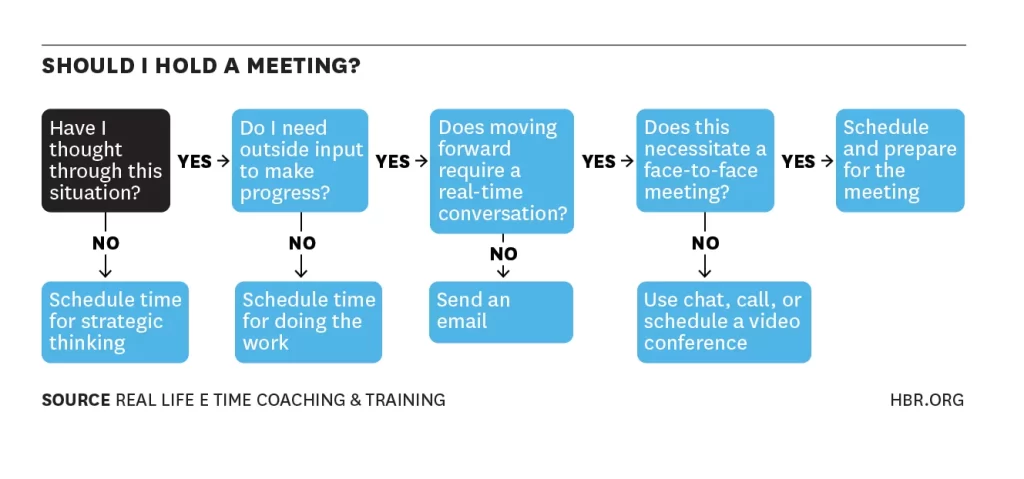Your employees are your most valuable business asset. If you treat them well, they’ll be hardworking and loyal. Without them, you don’t have a business.
This article originally appeared on the FOCUS blog.
Managers and business owners often wonder how best to improve employee productivity, and for good reason. According to Gallup, companies that can double the number of “engaged employees” obtain 147 percent higher revenue than their competitors. Similarly, Forbes reported that employees who are engaged with their company are 27 percent more likely to achieve “excellent” performance ratings.
So how can you improve productivity in your workplace? In the years I’ve been running Diggity Marketing and my SEO agency, I’ve learned a few lessons on maximizing team productivity. Read on to learn six of my top tips.
1. Give Your Employees the Right Tools
This is a no-brainer. If your employees are not equipped with the right productivity tools, they won’t function as efficiently.
The tools your employees need fall broadly into three categories:
- Collaboration and productivity tools
- Communication tools
- Time tracking tools
Collaboration and productivity tools help your employees to work together efficiently, whether or not they’re in the same location. They can make teamwork more efficient and projects run smoothly. This category includes task management tools such as MeisterTask, Trello and Asana, as well as tools for creating content together, such as G Suite and MindMeister.
Communication tools help your team to stay in touch with one another, with clients and with external stakeholders. Common examples include email, WhatsApp, and Slack.
Finally, time tracking tools allow you and your employees to keep track of how much time is spent on each task. This will show what could be made more efficient and which employees might have too much on their plate. ZoomShift is one example of a time tracking tool. You can also track project progress and timescales, ensuring everything is on track, with Gantt charts.
2. Get Rid of Motivation Killers
Motivation and productivity are closely intertwined. The reason is simple: motivated employees are more productive. Therefore, if you want your employees to be as productive as possible, you need to motivate them and eliminate “motivation killers”.
First, you’ll need to identify your company’s motivation killers. Some of the most common culprits are:
- Negative employees who bring everyone down
- Stress due to overwork or lack of support
- Lack of career development opportunities
- Boredom
- Feeling under-appreciated
Once you’ve identified the problems, you can start putting steps in place to mitigate them. If someone is being very negative and bringing their colleagues down, can you get to the bottom of what’s bothering them and offer support? Can you ensure you appropriately recognize good performance and reward employees who do well?
3. Don’t Micromanage
The temptation to micromanage can be overwhelming. After all, no-one knows your business and your vision better than you! Here’s the catch: micromanaging negatively affects productivity. It stresses people out and makes them feel like you don’t trust them. Micromanaging also has the potential to slow things down — it is tough for your employees to be efficient if you have to double-check everything they do.
Of course, you need to oversee projects and be available if your team needs you. In other words, you need to find the balance between being a hands-on manager and stepping back and trusting your team.
If you’re prone to micromanagement, try these tips to resolve the problem:
- Hire people whose skills, judgment and professionalism you trust.
- Provide clear and easy-to-follow instructions.
- Schedule regular check-ins.
- Let go of perfectionism. Sometimes “good enough” is good enough.
Also talk to your employees about how they prefer to be managed. People like different amounts of oversight in their work.
4. Get More Out of Meetings
We’re all familiar with the phenomenon of the two-hour meeting that should have been an email. Unnecessary meetings waste more time in the workplace than just about anything else. Therefore, just cutting down on meetings can significantly boost productivity.
Before you organize a meeting, ask yourself if you could convey the same information in an email, phone call, short video chat, or using one of the collaboration tools I mentioned above. If so, do that. If the meeting is truly essential, go ahead and schedule it. I like this flowchart from Harvard Business Review:

When you do hold meetings, create an agenda and stick to it. Respecting everyone’s time by following the agenda and starting and ending on time will substantially reduce wasted time. Ensure you build in time for discussion and questions so that everyone gets the chance to have their voice heard.
5. Mitigate Distractions
Everyone gets distracted sometimes — that’s human nature. But if distractions are seriously impacting productivity in your workplace, that’s a problem. A study by CareerBuilder found that, according to 52 percent of managers, cell phones were the biggest work productivity killer. The internet, idle office gossip, and social media followed closely behind.
If distractions like this are eating into productivity, you can take steps to mitigate them. For example, you can require that cell phones be kept on “silent” mode in the office, or that non-work conversations of more than a couple of minutes are confined to the break room.
Be careful, though — being too draconian will harm motivation and make your employees feel that they’re being treated like children. The trick is to create sensible and equitable guidelines, not to eliminate every possible distraction.
Home-based workers should also take steps to mitigate distractions. Possible strategies include not using social media accounts on work devices, using apps that block time-sucking websites, and working in a room with a closed door to minimize interruptions from family. You can offer to pay for tools like this from the company budget if you want to encourage their use.
But remember to be realistic, we are living in unusual times and many people have extra responsibilities such as homeschooling or caring full-time for family members. Treat your employees as human beings first and cut them some slack. They’ll repay you many times over.
6. Encourage Wellness
Everyone is happier and more productive when their physical and mental health is well taken care of. Therefore, it pays to advocate for wellness initiatives in your workplace.
Here are some ways you can do that as a business owner or boss:
- Ensure your employees have robust health insurance coverage.
- Provide an Employee Assistance Program, where anyone who is struggling can get confidential support.
- Provide discounts on gym memberships or fitness programs.
- Provide healthy snacks such as fruit in the break room.
- Partner with local restaurants serving healthy meals to offer discounts to your staff.
- Offer height-adjustable desks so employees can switch between standing and seated work.
- Ensure everyone has adequate time off and that they are able to completely unplug from work.
Many of these strategies are also applicable to remote workers, and wellness is particularly important amidst the current pandemic. If your employees are working from home, what about offering them a discount or free membership to online home workout programs? You could also provide financial support to ensure everyone has the equipment they need, such as a suitable desk and ergonomic office chair, if you can afford to.
Taking care of your employees’ health is not about micromanaging what they eat or how they exercise, of course. Instead, it’s about doing your part as an employer to ensure that healthy choices are available, accessible, and affordable.
How to Improve Workplace Productivity
If you want to grow your business, you need to maximize your team’s productivity. Increased productivity means less stress, higher revenue, and a happier working environment for everyone.
In summary, here are my six golden rules for maximum productivity:
- Make sure everyone has the tools they need.
- Figure out what your team’s motivation killers are and remove or mitigate them.
- Resist the temptation to micromanage.
- Conduct truly essential meetings only.
- Take steps to minimize distractions.
- Encourage and support your employees in taking care of their health.
Increasing productivity won’t happen overnight. But if you take all of these steps, you’ll start to see incremental changes that add up to a lot more getting done. Support your employees, and they’ll give back to you tenfold in loyalty and productivity.
This article originally appeared on the FOCUS blog.


